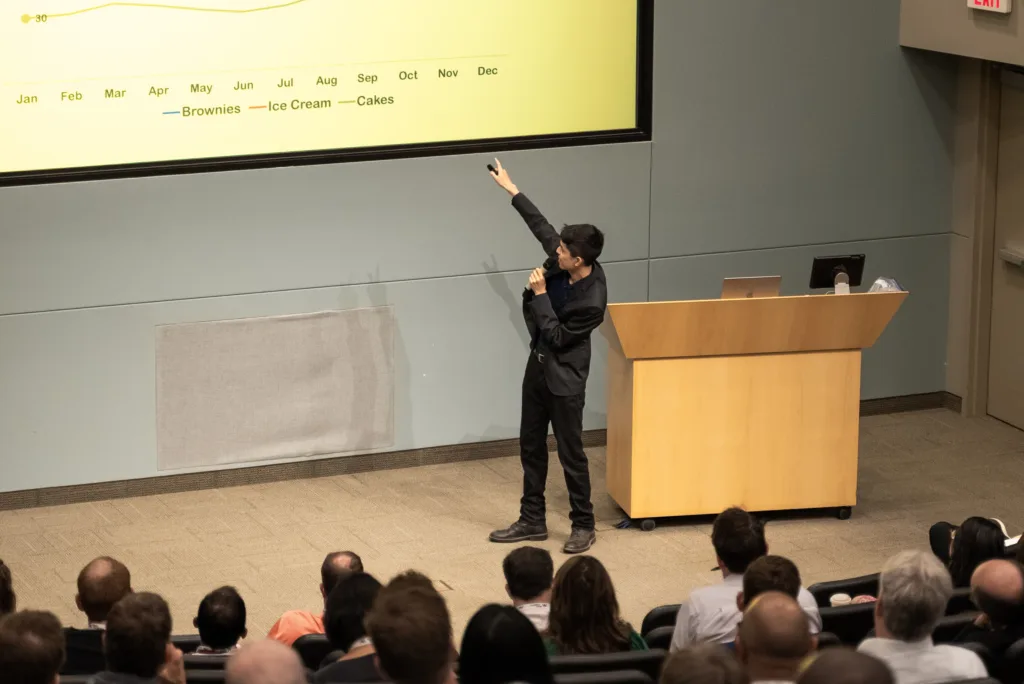Once you see it, you can’t unsee it. The rule of three, used extensively throughout our cultural media from writing and speeches to movies and music, revolves around one simple principle: use a 3-part structure. Here are a few idiomatic examples:
- Life, Liberty, and the Pursuit of Happiness.
- Blood, Sweat, and Tears.
- Government of the people, by the people, for the people.
Why is the number 3 so powerful? Writer Ian Fleming put it well in Goldfinger (1959):
“Once is happenstance. Twice is coincidence. The third time it’s enemy action”
Ian Fleming
Something needs to happen at least three times for us to see it as a pattern. Peter Clark makes a similar observation in Writing Tools: 50 Essential Strategies for Every Writer:
“Use one for power. Use two for comparison, contrast. Use three for completeness, wholeness, roundness.”
Roy Peter Clark
Three has a sense of satisfactory wholeness because our brain interprets it not as a coincidence or happenstance, but as a distinct pattern in the world that we should pay attention to.
In this post, we’ll break down how Barack Obama made extensive use of the Rule of Three in his 2008 presidential victory speech.
1. First Example
As you listen to the clip below, see if you can point out instances where Obama repeats a word, a phrase, or a sentence in a multiple of three. Note the emotional effect that repetition has on you as a listener:
Presentation Clip 1
In the clip, Obama uses the following 3-part sentence structure:
- “We didn’t start with much money or many endorsements”
- “Our campaign was not hatched in the halls of Washington”
- “It began in the backyards of Des Moines, and the living rooms of Concord, and the front porches of Charleston”
Statement #1 introduces the “power” – the main idea that Obama is trying to get across. In this case, the main idea is the humble beginnings of his presidential campaign.
Statement #2 is the “comparison, contrast”. By contrasting his small campaign with those of more elitist origins in “the halls of Washington”, Obama adds even more credence to his initial assertion of humble beginnings.
Finally statement #3 provides the “completeness, wholeness, roundness”. Obama drives his point home by detailing the exact location of those humble beginnings: the homes of the American people. You will notice that Obama often makes his third statement the longest one in order to dramatize the sense of “completeness” this last statement inherently carries.
Obama’s use of the Rule of Three, however, goes even one step further. What made him an exceptional speaker was his ability to sneak the Rule of Three into several rhetorical levels. Take another look at the third statement:
“It began in the backyards of Des Moines, and the living rooms of Concord, and the front porches of Charleston”
This is actually, in and of itself, a 3-part structure of phrases:
- “It began in the backyards of Des Moines,”
- “and the living rooms of Concord,”
- “and the front porches of Charleston”
Phrase #1 introduces the “power” – the main idea. In this case, the main idea is the geographic diversity of his campaign supporters.
Phrase #2 is the “comparison, contrast”. By comparing the “backyards of Des Moines” with the “living rooms of Concord”, Obama adds more weight to his initial assertion of geographic diversity.
Finally statement #3 provides the “completeness”, driving the idea about geographic diversity home with a concluding example that reinforces Phrase #1 and #2.
By using the Rule of three on the level of both phrase and sentence, Obama carries his point across with extra, underlying gravitas.
2. Second Example
Below is a second example of Obama’s use of the Rule of Three:
Presentation Clip 2
- “It grew strength from the young people who rejected the myth of their generation’s apathy, who left their homes and their families for jobs that offered little pay and less sleep”
- “It drew strength from the not-so-young people, who braved the bitter cold and scorching heat to knock on doors of perfect strangers”
- “And from the millions of Americans who volunteered and organized and proved that more than two centuries later a government of the people by the people and for the people has not perished from the earth. This is your victory”
Statement #1 introduces the main idea that Obama’s campaign drew strength from all Americans.
Statement #2 amplifies this idea through contrast, exhibiting how courage was found in not only the “young” Americans of Statement #1, but also in the “not-so-young”.
Finally, Statement #3 is once again the longest, driving Obama’s point home by extending the scope of people being described to all Americans, across all ages and all communities.
This third statement, however, is not only the 3rd in a 3-part sentence structure. It is also the culmination of Obama’s entire opening section. The ending declaration, “This is your victory,” is a perfect summation of the speech’s primary goal thus far – to convey to the audience that this is not Obama’s victory. It is the victory of all the “millions” of Americans from the “young” to the “not-so-young” who lived in “Des Moines” and “Concord” and “Charleston” across the United States.
In order to deliver this sentiment of national accomplishment, Obama used the power of the Rule of Three not only at the sentence level, but also at the phrase level and the word level. Let’s break down the third statement again:
“And from the millions of Americans who volunteered and organized and proved that more than two centuries later a government of the people by the people and for the people has not perished from the earth. This is your victory.”
At the word level, Obama uses the 3-part structure:
- “Volunteered”
- “Organized”
- “Proved”
Each additional word, punctuated by the repetition of the conjunction “and” as well as the rising volume of Obama’s voice, builds upon the main idea that his supporters were outstandingly committed to the campaign. That momentum then leads toward the final famous phrase:
- “A government of the people”
- “By the people”
- “And for the people”
The main idea expounded by this 3-part phrase is the democratic principles of American government. Obama uses this oft-cited phrase to concretize his intended role in America’s legacy. He wants to carry the torch of America’s values and be a symbol for all Americans, as did each of his predecessors for over two centuries.
Summary
When creating your own presentation, follow these tips to achieve Obama’s mastery of the Rule of Three:



